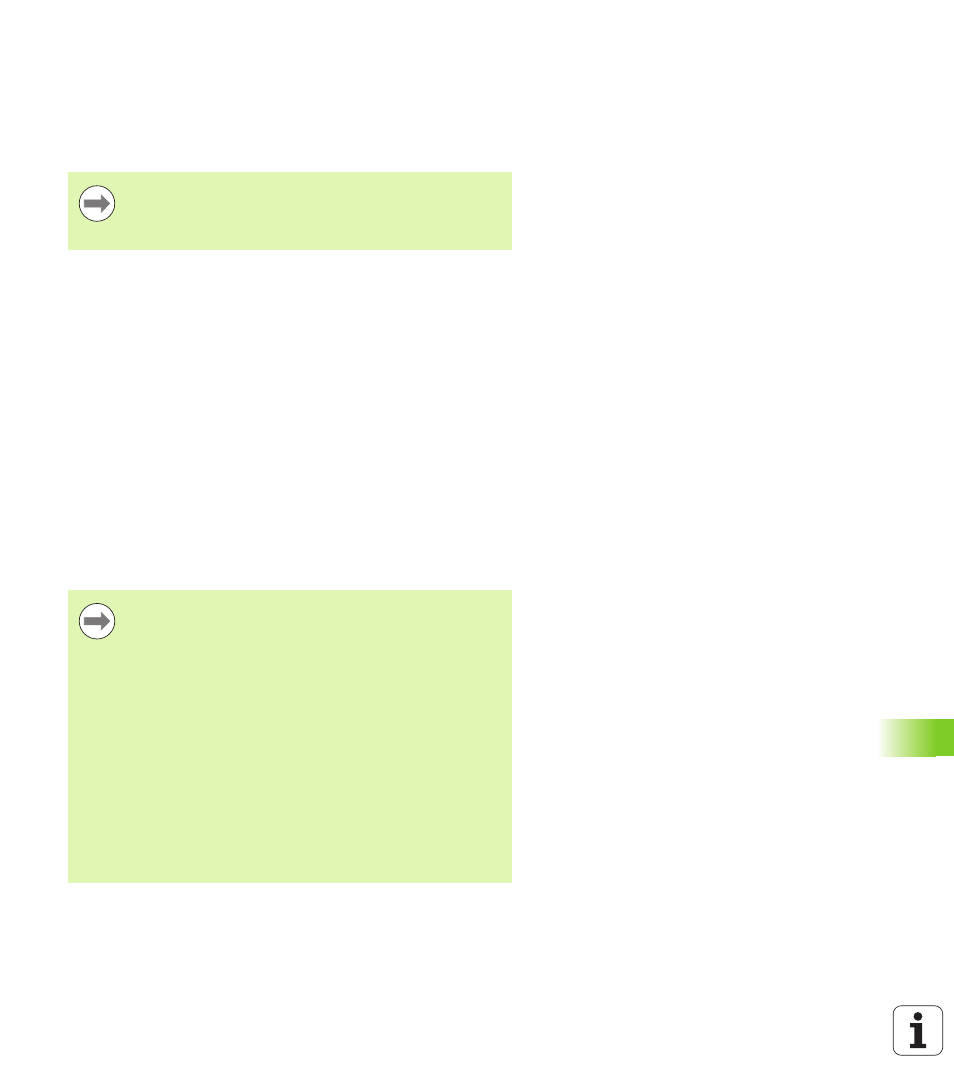5 measuring in 3-d (cycle 4, fcl 3 function), Cycle run, Please note while programming – HEIDENHAIN 530 (340 49x-07) Cycle programming User Manual
Page 463

HEIDENHAIN iTNC 530
463
1
7.5 MEA
S
URING IN 3-D (Cy
c
le 4, FCL 3 function)
17.5 MEASURING IN 3-D (Cycle 4,
FCL 3 function)
Cycle run
Touch Probe Cycle 4 measures any position on the workpiece in the
probing direction defined by a vector. Unlike other measuring cycles,
Cycle 4 enables you to enter the measuring path and feed rate directly.
Also, the touch probe retracts by a definable value after determining
the measured value.
1
The touch probe moves from the current position at the entered
feed rate in the defined probing direction. Define the probing
direction in the cycle by using a vector (delta values in X, Y and Z).
2
After the TNC has saved the position, the touch probe stops. The
TNC saves the X, Y, Z coordinates of the probe-tip center (without
calculation of the calibration data) in three successive Q
parameters. You define the number of the first parameter in the
cycle.
3
Finally, the TNC moves the touch probe back by that value against
the probing direction that you defined in the parameter MB.
Please note while programming:
Cycle 4 is an auxiliary cycle that you can only use in
conjunction with external software! The TNC does not
provide any cycle with which you can calibrate the touch
probe:
The TNC retracts the touch probe by no more than the
retraction distance MB and does not pass the starting point
of the measurement. This rules out any collision during
retraction.
Ensure during pre-positioning that the TNC moves the
probe-tip center without compensation to the defined
position!
Remember that the TNC always writes to 4 successive Q
parameters. If the TNC could not determine a valid touch
point, the fourth result parameter will have the value –1.
The TNC saves the measured values without calculating
the calibration data of the touch probe.
With function FN17: SYSWRITE ID 990 NR 6 you can set
whether the cycle runs through the probe input X12 or
X13.
